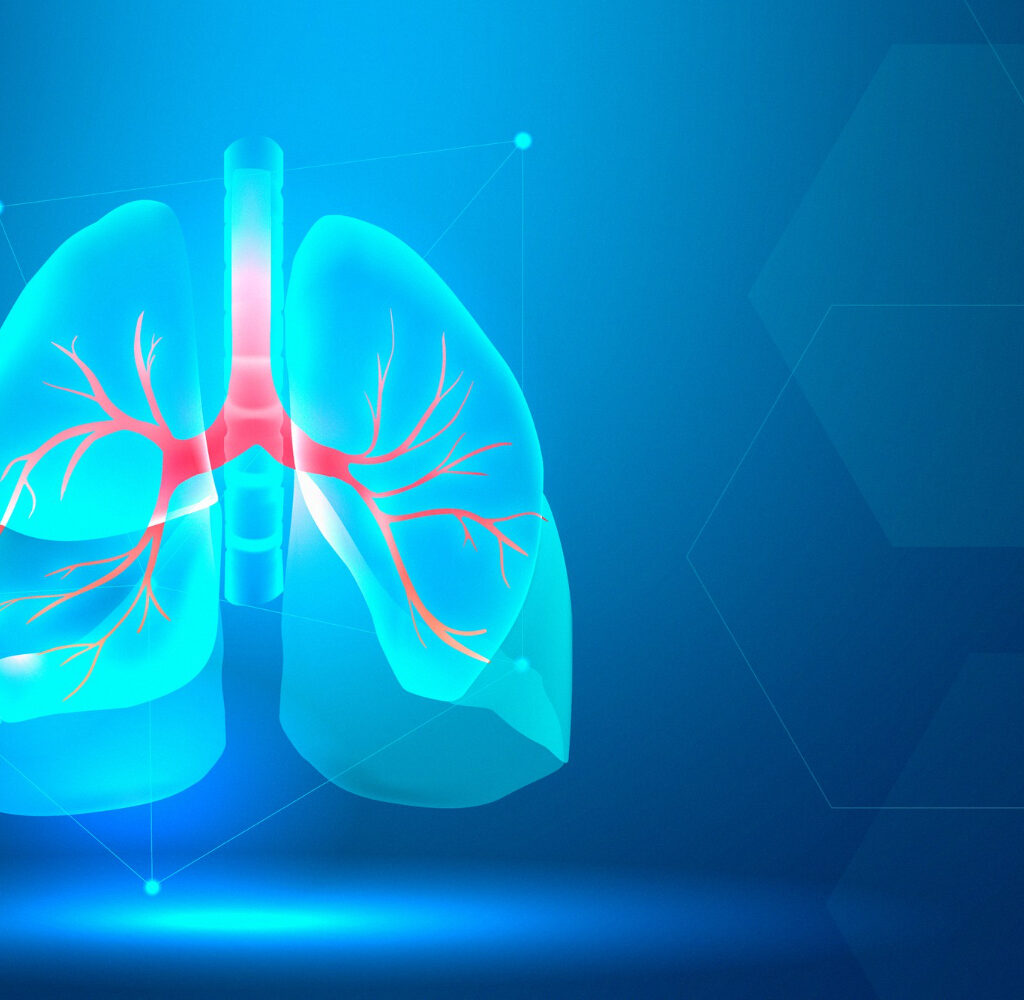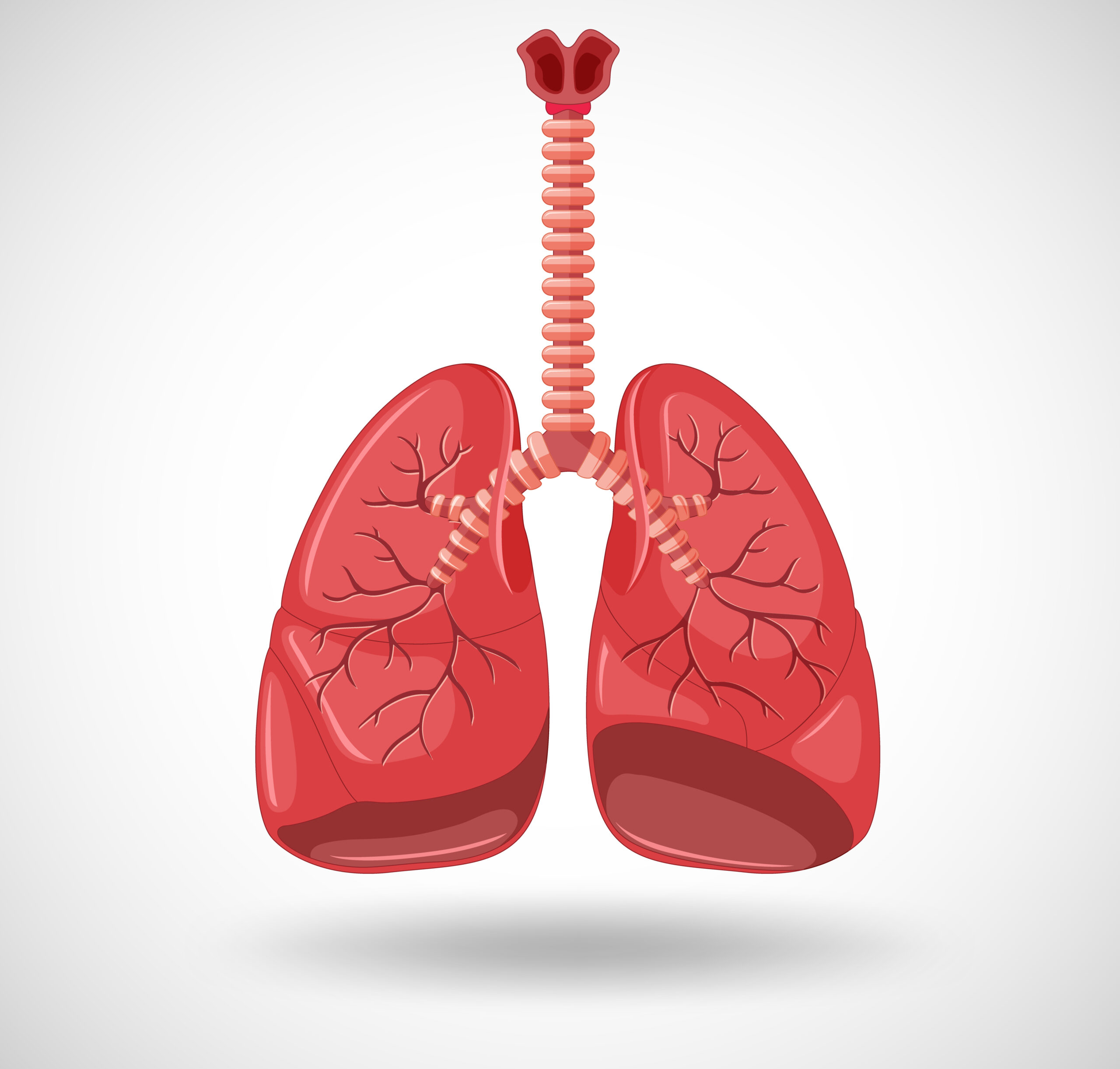Pulmonary Alveolar Proteinosis (PAP) is a rare lung disorder characterized by the accumulation of abnormal surfactant-like material in the alveoli, the tiny air sacs in the lungs. Surfactant is a substance that helps maintain the stability of the alveoli and facilitates the exchange of oxygen and carbon dioxide. In PAP, there is a disruption in the normal clearance of surfactant, leading to its accumulation and impairment of lung function.
Key Features of Pulmonary Alveolar Proteinosis:
- Accumulation of Surfactant:
- The hallmark feature of Pulmonary Alveolar Proteinosis is the buildup of a lipoproteinaceous material (similar to surfactant) in the alveoli.
- This accumulation impairs the normal exchange of gases, leading to respiratory difficulties.
- Impaired Gas Exchange:
- The abnormal material in the alveoli interferes with the exchange of oxygen and carbon dioxide, resulting in respiratory dysfunction.
- Symptoms:
- Common symptoms include difficulty breathing (dyspnea), cough, and fatigue.
- Respiratory symptoms may progress gradually and vary in severity.
- Three Forms of Pulmonary Alveolar Proteinosis:
- Autoimmune (Primary) PAP:
- The most common form, where the immune system produces antibodies against surfactant proteins.
- Individuals with autoimmune Pulmonary Alveolar Proteinosis may have associated autoimmune conditions.
- Secondary PAP:
- Occurs as a result of underlying conditions or exposures, such as infections, hematologic disorders, or exposure to certain dust or chemicals.
- Congenital PAP:
- A rare form that is present from birth and is associated with genetic mutations affecting surfactant production or clearance.
- Autoimmune (Primary) PAP:
- Diagnosis:
- Diagnosis often involves imaging studies, such as chest X-rays or CT scans, which may show a characteristic “crazy-paving” pattern.
- Bronchoalveolar lavage (BAL) is a diagnostic procedure where a sample of lung fluid is collected and analyzed.
- Treatment:
- The primary treatment for Pulmonary Alveolar Proteinosis is whole lung lavage, a procedure in which accumulated material is washed out of the lungs using a saline solution.
- In some cases, supportive therapies or medications may be used to manage symptoms.
- Prognosis:
- The prognosis varies depending on the type of Pulmonary Alveolar Proteinosis and its underlying causes.
- Autoimmune Pulmonary Alveolar Proteinosis generally has a better prognosis than secondary forms.
Pulmonary Alveolar Proteinosis Treatment Options
The primary treatment approach for Pulmonary Alveolar Proteinosis (PAP) is aimed at removing the accumulated abnormal surfactant-like material from the alveoli and managing respiratory symptoms. Here are the key treatment approaches for Pulmonary Alveolar Proteinosis:
1. Whole Lung Lavage:
- Description:
- Whole lung lavage is the primary and most effective treatment for Pulmonary Alveolar Proteinosis.
- It involves washing out the accumulated material from the alveoli using a saline solution.
- Procedure:
- One lung is usually isolated, and saline is introduced into the lung through a tube.
- The saline is then drained, carrying away the accumulated material.
- The procedure is typically performed in segments until the entire lung is cleared.
- Frequency:
- The frequency of whole lung lavage sessions depends on the severity of symptoms and the extent of material accumulation.
- Effectiveness:
- Whole lung lavage can significantly improve symptoms and lung function in individuals with Pulmonary Alveolar Proteinosis.
- It may need to be repeated if symptoms recur.
2. Pharmacological Therapies:
- GM-CSF Therapy:
- In some cases of autoimmune PAP, where there is a deficiency of granulocyte-macrophage colony-stimulating factor (GM-CSF), exogenous GM-CSF may be administered.
- GM-CSF stimulates the production and activity of alveolar macrophages, which are involved in clearing surfactant.
- Inhaled GM-CSF:
- Inhaled GM-CSF can be used to deliver the medication directly to the lungs.
- This approach may be considered for certain cases of autoimmune PAP.
- Effectiveness:
- GM-CSF therapy may help manage symptoms and reduce the need for frequent whole lung lavage.
- However, the response to GM-CSF therapy can vary among individuals.
3. Supportive Therapies:
- Oxygen Therapy:
- Oxygen supplementation may be necessary to support individuals with respiratory distress and improve oxygen levels.
- Management of Infections:
- Prompt treatment of respiratory infections is important to prevent complications and exacerbation of symptoms.
- Prophylactic antibiotics may be considered in some cases.
4. Monitoring and Follow-Up:
- Regular Follow-Up:
- Regular monitoring of lung function, symptoms, and imaging studies is essential to assess the effectiveness of treatment and identify any recurrence of symptoms.
- Lung Function Tests:
- Periodic lung function tests, including spirometry and diffusion capacity testing, can help track changes in respiratory function.
5. Lung Transplantation:
- Consideration:
- In severe cases or when other treatment options are not effective, lung transplantation may be considered.
- Lung transplantation is typically reserved for individuals with advanced disease and significant respiratory impairment.
- Challenges:
- The availability of suitable donor lungs and the complexities of transplantation make this option less common.
6. Educational and Supportive Care:
- Patient Education:
- Providing information and education about the condition and its management is crucial for individuals with PAP.
- Support Groups:
- Connecting individuals with PAP to support groups can provide emotional and practical support.
7. Individualized Approach:
- Tailoring Treatment:
- Treatment plans are often individualized based on the type of PAP, the underlying cause, and the severity of symptoms.
- Collaborative Care:
- A collaborative approach involving pulmonologists, immunologists, and other specialists ensures comprehensive care.
Pulmonary Alveolar Proteinosis is a rare and complex lung disorder, and the choice of treatment depends on the specific circumstances of each case. Management may involve a combination of the above approaches, and the treatment plan is adjusted based on the individual’s response to interventions. Regular follow-up and ongoing communication with healthcare providers are essential for optimizing the management of PAP.

What are some potential complications of PAP?
Pulmonary Alveolar Proteinosis (PAP) can lead to various complications due to the accumulation of abnormal surfactant-like material in the alveoli and the resulting impairment of lung function. The severity of complications can vary among individuals and depends on factors such as the type of Pulmonary Alveolar Proteinosis, the extent of lung involvement, and the effectiveness of treatment. Here are some potential complications associated with PAP:
1. Respiratory Distress:
- Description:
- Progressive accumulation of surfactant in the alveoli can lead to worsening respiratory distress.
- Severe dyspnea (difficulty breathing) may occur, impacting daily activities and quality of life.
- Management:
- Whole lung lavage and supportive therapies aim to alleviate respiratory distress, but in some cases, persistent symptoms may pose challenges.
2. Hypoxemia:
- Description:
- Insufficient oxygenation of the blood due to impaired gas exchange in the lungs.
- Low oxygen levels (hypoxemia) can result in fatigue, dizziness, and difficulty concentrating.
- Management:
- Oxygen therapy may be required to maintain adequate blood oxygen levels and alleviate symptoms.
3. Respiratory Infections:
- Description:
- The altered lung environment in Pulmonary Alveolar Proteinosis may increase susceptibility to respiratory infections.
- Infections can further compromise respiratory function and contribute to symptom exacerbation.
- Management:
- Prompt identification and treatment of respiratory infections are crucial to prevent complications.
4. Pulmonary Fibrosis:
- Description:
- In some cases, chronic inflammation and scarring of lung tissue (pulmonary fibrosis) may develop.
- Pulmonary fibrosis can lead to further impairment of lung function and respiratory symptoms.
- Management:
- Treatment aims to address underlying causes and manage symptoms, but pulmonary fibrosis may contribute to long-term complications.
5. Weight Loss and Malnutrition:
- Description:
- Persistent respiratory symptoms, decreased appetite, and increased energy expenditure can contribute to weight loss and malnutrition.
- Management:
- Nutritional support and dietary interventions may be necessary to address weight loss and maintain adequate nutrition.
6. Psychosocial Impact:
- Description:
- Chronic respiratory symptoms and the impact of PAP on daily activities can lead to emotional distress, anxiety, and depression.
- Management:
- Psychological support, counseling, and involvement in support groups can help individuals cope with the psychosocial impact of PAP.
7. Pulmonary Hypertension:
- Description:
- Prolonged respiratory distress and impaired oxygenation can contribute to the development of pulmonary hypertension.
- Pulmonary hypertension is characterized by elevated blood pressure in the pulmonary arteries.
- Management:
- Treatment of underlying causes, optimization of oxygen therapy, and medications to manage pulmonary hypertension may be considered.
8. Complications of Treatment:
- Whole Lung Lavage Complications:
- While whole lung lavage is a primary treatment for PAP, it carries potential risks and complications, including infections, bleeding, and respiratory distress during the procedure.
- Pharmacological Therapies:
- Some individuals may experience side effects or complications related to pharmacological therapies, such as GM-CSF treatment.
9. Reduced Quality of Life:
- Description:
- The combination of respiratory symptoms, potential complications, and the impact on daily activities can lead to a reduced quality of life for individuals with PAP.
- Management:
- Comprehensive care, including symptom management, supportive therapies, and psychological support, aims to improve overall well-being.
10. Lung Transplantation Consideration:
- Description:
- In severe cases with progressive complications and limited response to treatments, lung transplantation may be considered.
- Challenges:
- Availability of suitable donor lungs, the complexity of transplantation, and potential post-transplant complications present challenges.
11. Relapse of Symptoms:
- Description:
- Despite initial treatment success, there is a possibility of the relapse of PAP symptoms, necessitating further interventions.
- Management:
- Regular monitoring and adjustments to the treatment plan are crucial to manage and prevent symptom relapse.
12. Complications of Secondary PAP:
- Underlying Causes:
- Complications may arise from the underlying conditions associated with secondary PAP, such as infections, hematologic disorders, or environmental exposures.
- Management:
- Treating the underlying causes is important to prevent complications related to secondary PAP.
Conclusion:
Managing potential complications of PAP requires a multidisciplinary approach, including pulmonologists, immunologists, and other specialists. Regular monitoring, timely interventions, and ongoing communication between healthcare providers and individuals with PAP are essential to optimize care and improve overall outcomes.

